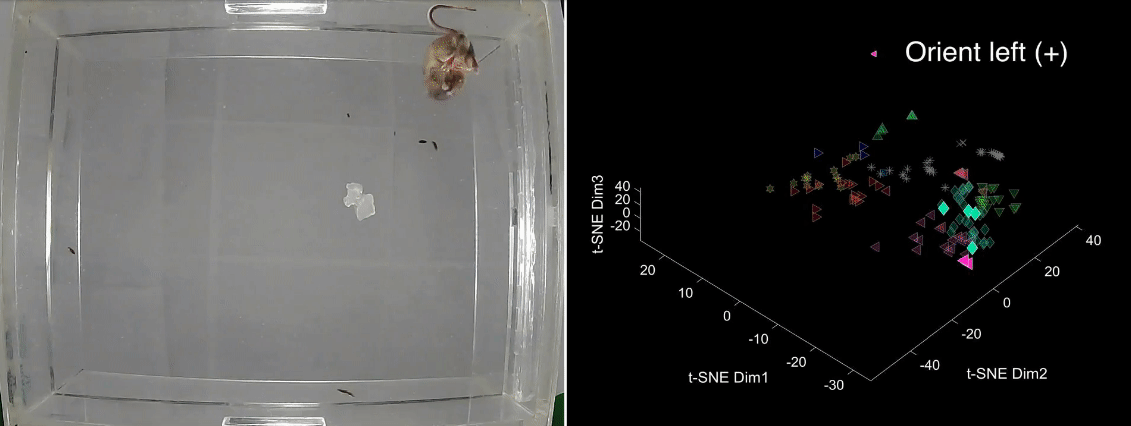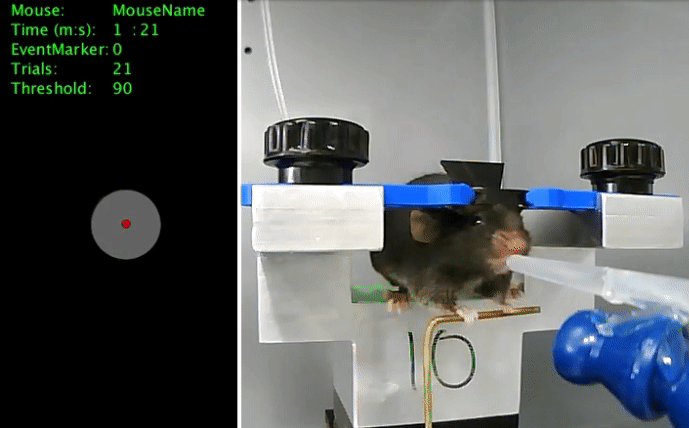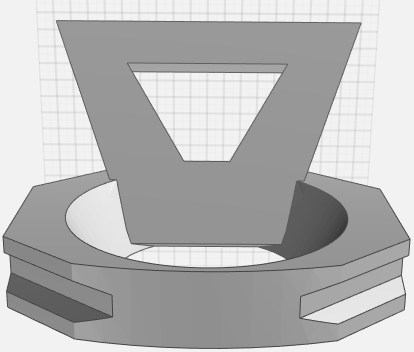B-SOiD: An Open Source Unsupervised Algorithm for Discovery of Spontaneous Behaviors

To provide a high temporal resolution bridge from positions to actions and their kinematics, we developed Behavioral Segmentation of Open-field In DeepLabCut (B-SOiD). This unsupervised learning algorithm discovers and classifies actions based on the inherent statistics of the data points provided. Our algorithm integrates dimensionality reduction, pattern recognition, and machine learning to unbiasedly extract behaviors with a single, bottom-up camera. Through the application of a novel frame-shift paradigm, B-SOiD detects the instantaneous transitions between with the temporal resolution necessary for use with electrophysiologcal recordings. This open-source platform improves analytical accessibility, power, and ease of use over the state of the field. B-SOiD also readily provides critical, high-resolution behavioral measures that historically have been difficult to quantify, such as stride and grooming kinematics.
B-SOiD is available at the lab Github.
Hsu, bioRxi, 2019
Building a rodent joystick to monitor real-time spatiotemporal kinematics of reaching behavior

We are realizing that the behavioral repertoire of mice is much richer than previously thought, including motor control and decision-making using reaches. Modern neuroscience is now capturing this richness, paired with new genetic tools, to understand fundamental neuroscience principles. Here, we provide an illustrated build guide, code, multiple use scenarios, and analytic tools to a low-cost, highly customizable mouse joystick. This tool will enable improved throughput, accessibility, and experimental design (e.g. spatiotemporal reach trajectories over lever presses) for labs wishing to study a range of reach-based experiments.
The joystick build manual and analysis software can be found at the lab Github.
Belsey et al., eNeuro, 2020
Drawings for mouse shuttle, headcap and headcap holders

Here we supply soldiworks parts drawings for the mouse shuttle, headcap, and headcap holder which can be used to build a head-fixed behavioral and or electrophysiology apparatus. We have machined the mouse shuttle using aluminium and 3D printed the headcaps and headcap holders. These drawings can be manipulated and customized to experiment specific desires.
All drawings can be found at the lab Github.